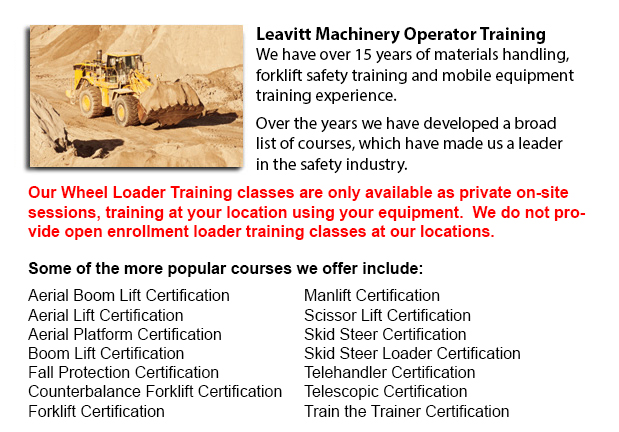
Lift trucks are accessible in different load capacities and several models. Most lift trucks in a regular warehouse setting have load capacities between one to five tons. Bigger scale models are used for heavier loads, like for example loading shipping containers, may have up to fifty tons lift capacity.
The operator could make use of a control in order to raise and lower the blades, which can likewise be called "blades or tines". The operator of the forklift could tilt the mast so as to compensate for a heavy loads tendency to tilt the blades downward. Tilt provides an ability to operate on uneven surface as well. There are annual competitions meant for skillful forklift operators to contend in timed challenges as well as obstacle courses at regional lift truck rodeo events.
General operations
All forklifts are rated for safety. There is a particular load limit and a specified forward center of gravity. This essential information is provided by the manufacturer and positioned on the nameplate. It is essential cargo do not go over these specifications. It is unlawful in numerous jurisdictions to interfere with or take out the nameplate without obtaining consent from the forklift manufacturer.
Most forklifts have rear-wheel steering to be able to improve maneuverability. This is particularly effective within confined areas and tight cornering spaces. This particular type of steering varies quite a bit from a driver's initial experience with different motor vehicles. For the reason that there is no caster action while steering, it is no essential to use steering force to be able to maintain a continuous rate of turn.
Unsteadiness is another unique characteristic of forklift operation. A continuously varying centre of gravity occurs with each movement of the load amid the lift truck and the load and they need to be considered a unit during operation. A lift truck with a raised load has gravitational and centrifugal forces that can converge to lead to a disastrous tipping accident. To be able to prevent this from happening, a forklift should never negotiate a turn at speed with its load elevated.
Lift trucks are carefully designed with a certain load limit intended for the tines with the limit decreasing with undercutting of the load. This means that the freight does not butt against the fork "L" and will lessen with the rise of the fork. Usually, a loading plate to consult for loading reference is placed on the lift truck. It is unsafe to make use of a forklift as a personnel hoist without first fitting it with specific safety devices like for instance a "cage" or "cherry picker."
Forklift use in distribution centers and warehouses
Vital for every warehouse or distribution center, the lift truck should have a safe setting in which to accommodate their efficient and safe movement. With Drive-In/Drive-Thru Racking, a forklift needs to travel inside a storage bay that is several pallet positions deep to put down or get a pallet. Operators are normally guided into the bay through rails on the floor and the pallet is located on cantilevered arms or rails. These confined manoeuvres need skilled operators to be able to carry out the task safely and efficiently. Because each pallet requires the truck to go in the storage structure, damage done here is more common than with different types of storage. Whenever designing a drive-in system, considering the size of the blade truck, as well as overall width and mast width, have to be well thought out to guarantee all aspects of a safe and effective storage facility.
-
Counterbalance Forklift License Kelowna
Counterbalance Forklift License Kelowna - Forklifts, when operated by completely trained workers, are a major advantage to companies. We offer a thorough training program consisting of all parts of operating a powered lift device. Counterbalance fork... More -
Forklift Certification Schools Kelowna
Forklift Certification Schools Kelowna - Within North America, forklift certification is mandatory, making forklift training programs important for both the company and their employees working as forklift operators. Forklift training focuses on healt... More -
Manlift Operator Certification Kelowna
Manlift Operator Certification Kelowna - We provide a scissor platform and aerial lift training and certification to empower the trainee with the general understanding and knowledge of the safe and efficient utilization of "Power Operated Mobile Work... More -
Crane Training Schools Kelowna
Crane Training Schools Kelowna - We have designed several programs for Mobile Crane Operation at our Crane Training Schools. These programs are recommended for the experienced operator who requires re-certification or certification, and for inexperie... More -
Heavy Equipment Operator Classes Kelowna
Heavy Equipment Operator Classes Kelowna - A heavy equipment operator is a person who has received the proper training to operate a particular type or piece of machine. There are a lot of ways for the operator to undergo training and certification in... More -
Telehandler, Rotational Telehandler, Zoom Boom Training in Kelowna
Telehandlers or also known as Telescopic handlers are really popular piece of heavy construction equipment normally utilized in agriculture and construction trades. These equipments have extreme reaching capability and could get to places where a tra... More -
Zoom Boom Training Kelowna
Zoom Boom Training Kelowna - Zoom Boom Training is intended to train operators on variable reach forklifts. The goals of the training are to impart an understanding of the physics of the equipment, and to outline the operator's tasks. This course fol... More -
Boom Lift Safety Training Kelowna
Boom Lift Safey Training Kelowna - Boom lifts fall under the type of elevated work platform or aerial lifting device. Most normally utilized in construction, industry, and warehousing; the boom lift is so versatile that it can be utilized in almost w... More

Forklift Training Kelowna
TOLL FREE: 1-888-254-6157
Kelowna, British Columbia
forklifttraininginkelowna.com
Email Us
About Us


